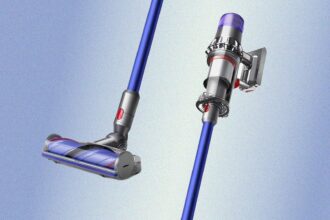An image of the eastern hemisphere of the Moon as the Artemis II astronauts would see it from an altitude of about 7,000 kilometers. The Moon’s far side is mostly dark in this image, which is based on a simulated trajectory. The dark patches near the center of the sunlit portion are plains of ancient lava: Mare Marginis to the north and Mare Smythii to the south.
NASA Goddard/Ernie Wright
NASA’s Artemis II mission, set to send four astronauts on a nearly 10-day mission around the Moon and back, will advance the agency’s goal to land astronauts at the Moon’s south polar region and will help set the stage for future crewed Mars missions.
While the Artemis II crew will be the first humans to test NASA’s Orion spacecraft in space, they will also conduct science investigations that will inform future deep space missions, including a lunar science investigation as Orion flies about 4,000 to 6,000 miles from the Moon’s surface. From this distance, the Moon will appear to be the size of a basketball held at arm’s length and will provide a unique opportunity for scientific observations.
## Artemis II is a chance for astronauts to implement the lunar science skills they’ve developed in training. It’s also an opportunity for scientists and the engineers in mission control to collaborate during real-time operations …
Kelsey Young
Artemis II lunar science lead at NASA’s Goddard Space Flight Center in Greenbelt, Maryland.
As Orion passes on the far side of the Moon — the side that always faces away from Earth — the crew will analyze and photograph geologic features on the surface, such as impact craters and ancient lava flows, relying on their extensive geology training in the classroom and in Moon-like places on Earth. The astronauts will also practice describing nuances in shapes, textures, and colors of surface features. This type of information reveals the geologic history of an area and will be critical to collect when Artemis III astronauts explore the surface.
“Artemis II is a chance for astronauts to implement the lunar science skills they’ve developed in training,” said Kelsey Young, Artemis II lunar science lead at NASA’s Goddard Space Flight Center in Greenbelt, Maryland. “It’s also an opportunity for scientists and the engineers in mission control to collaborate during real-time operations, building on the years of testing and simulations that our teams have done together.”
An image of the eastern hemisphere of the Moon as the Artemis II astronauts would see it from an altitude of about 7,000 kilometers.
While the Artemis II crew will be the first humans to test NASA’s Orion spacecraft in space, they will also conduct science investigations that will inform future deep space missions, including a lunar science investigation as Orion flies about 4,000 to 6,000 miles from the Moon’s surface.
Artemis II is a chance for astronauts to implement the lunar science skills they’ve developed in training.
It’s also an opportunity for scientists and the engineers in mission control to collaborate during real-time operations … Kelsey Young Artemis II lunar science lead at NASA’s Goddard Space Flight Center in Greenbelt, Maryland.
“Artemis II is a chance for astronauts to implement the lunar science skills they’ve developed in training,” said Kelsey Young, Artemis II lunar science lead at NASA’s Goddard Space Flight Center in Greenbelt, Maryland.

An image of the eastern hemisphere of the Moon as the Artemis II astronauts would see it from an altitude of about 7,000 kilometers. The Moon’s far side is mostly dark in this image, which is based on a simulated trajectory. The dark patches near the center of the sunlit portion are plains of ancient lava: Mare Marginis to the north and Mare Smythii to the south.
NASA Goddard/Ernie Wright
NASA’s Artemis II mission, set to send four astronauts on a nearly 10-day mission around the Moon and back, will advance the agency’s goal to land astronauts at the Moon’s south polar region and will help set the stage for future crewed Mars missions.
While the Artemis II crew will be the first humans to test NASA’s Orion spacecraft in space, they will also conduct science investigations that will inform future deep space missions, including a lunar science investigation as Orion flies about 4,000 to 6,000 miles from the Moon’s surface. From this distance, the Moon will appear to be the size of a basketball held at arm’s length and will provide a unique opportunity for scientific observations.
Artemis II is a chance for astronauts to implement the lunar science skills they’ve developed in training. It’s also an opportunity for scientists and the engineers in mission control to collaborate during real-time operations …
Kelsey Young
Artemis II lunar science lead at NASA’s Goddard Space Flight Center in Greenbelt, Maryland.
As Orion passes on the far side of the Moon — the side that always faces away from Earth — the crew will analyze and photograph geologic features on the surface, such as impact craters and ancient lava flows, relying on their extensive geology training in the classroom and in Moon-like places on Earth. The astronauts will also practice describing nuances in shapes, textures, and colors of surface features. This type of information reveals the geologic history of an area and will be critical to collect when Artemis III astronauts explore the surface.
“Artemis II is a chance for astronauts to implement the lunar science skills they’ve developed in training,” said Kelsey Young, Artemis II lunar science lead at NASA’s Goddard Space Flight Center in Greenbelt, Maryland. “It’s also an opportunity for scientists and the engineers in mission control to collaborate during real-time operations, building on the years of testing and simulations that our teams have done together.”




